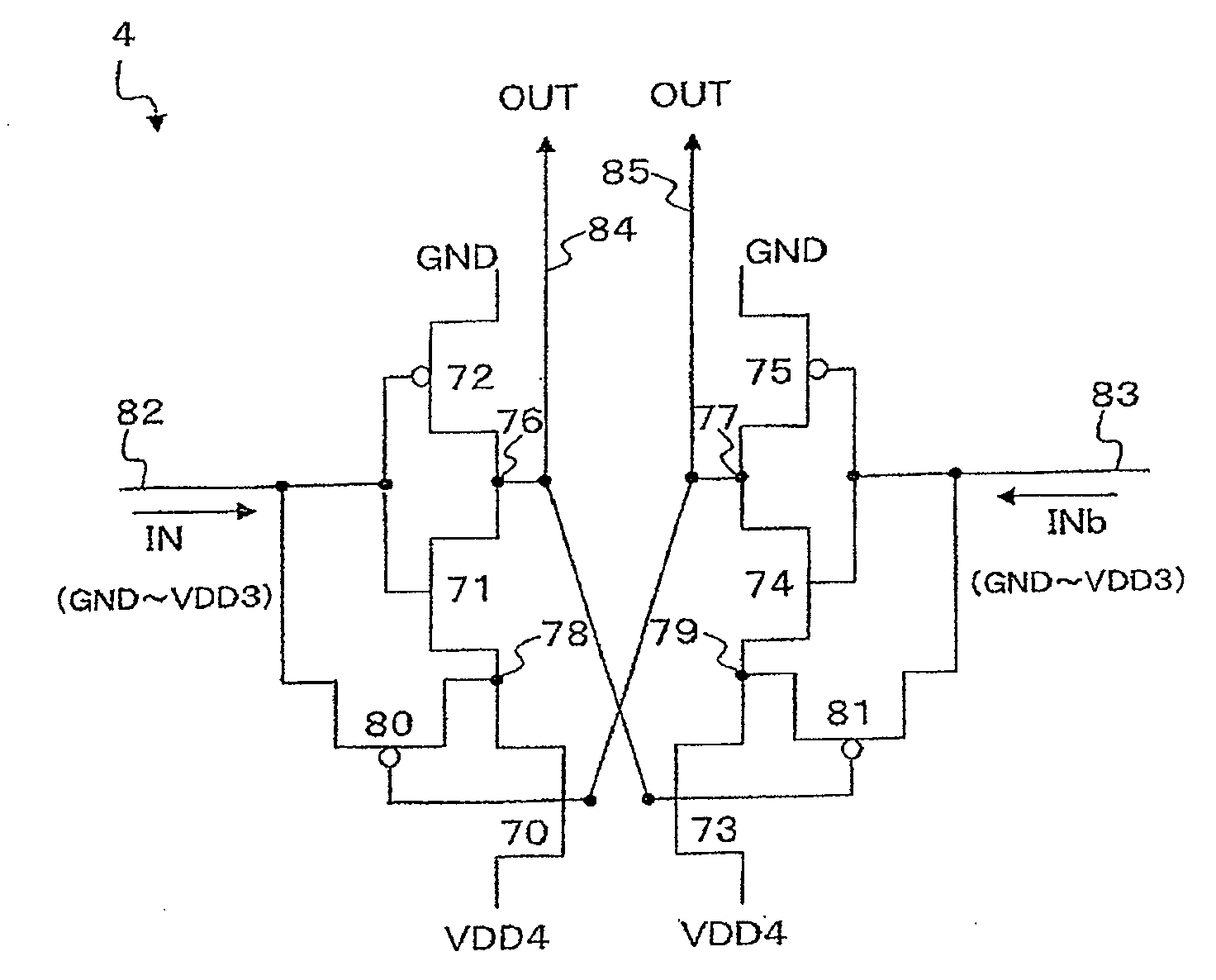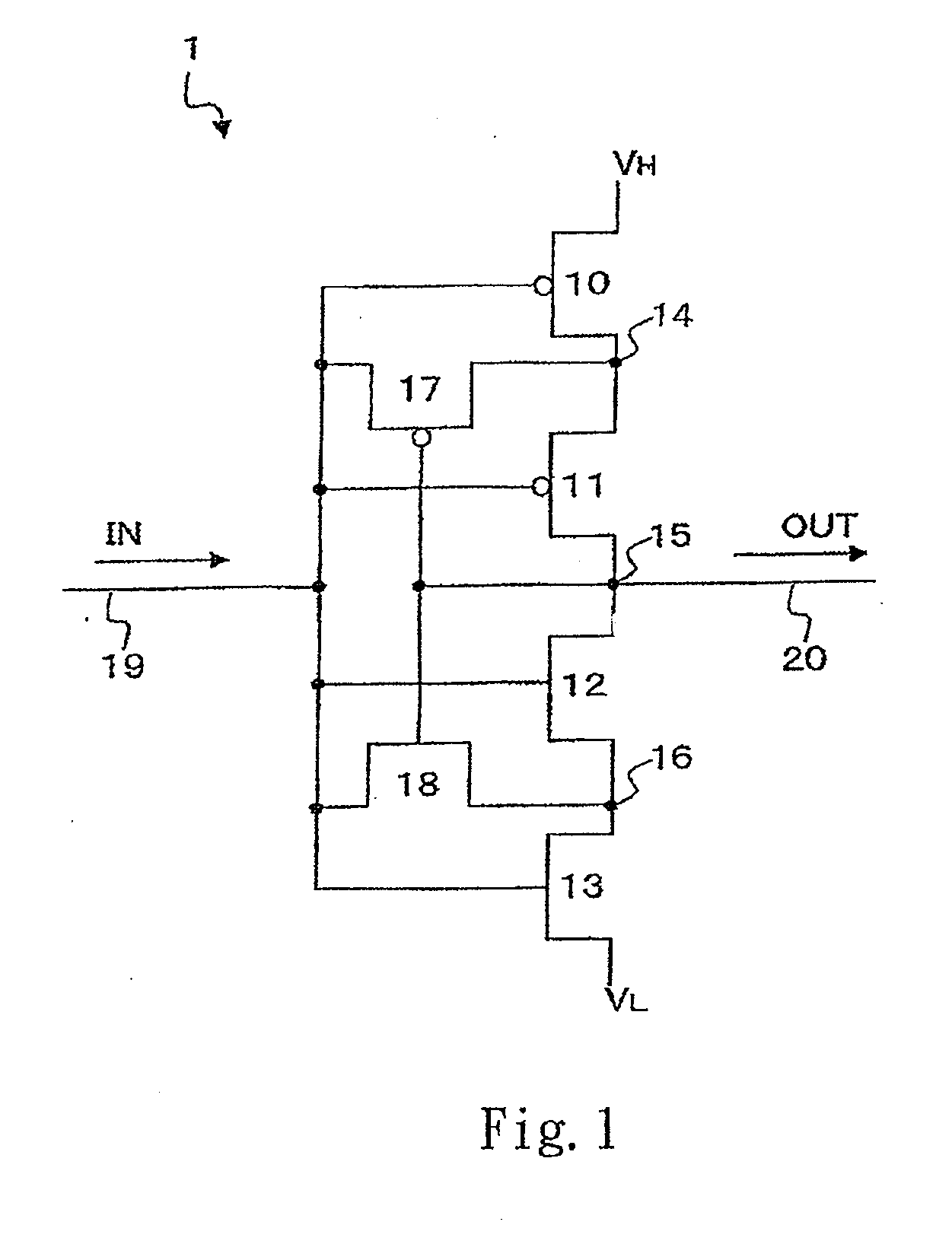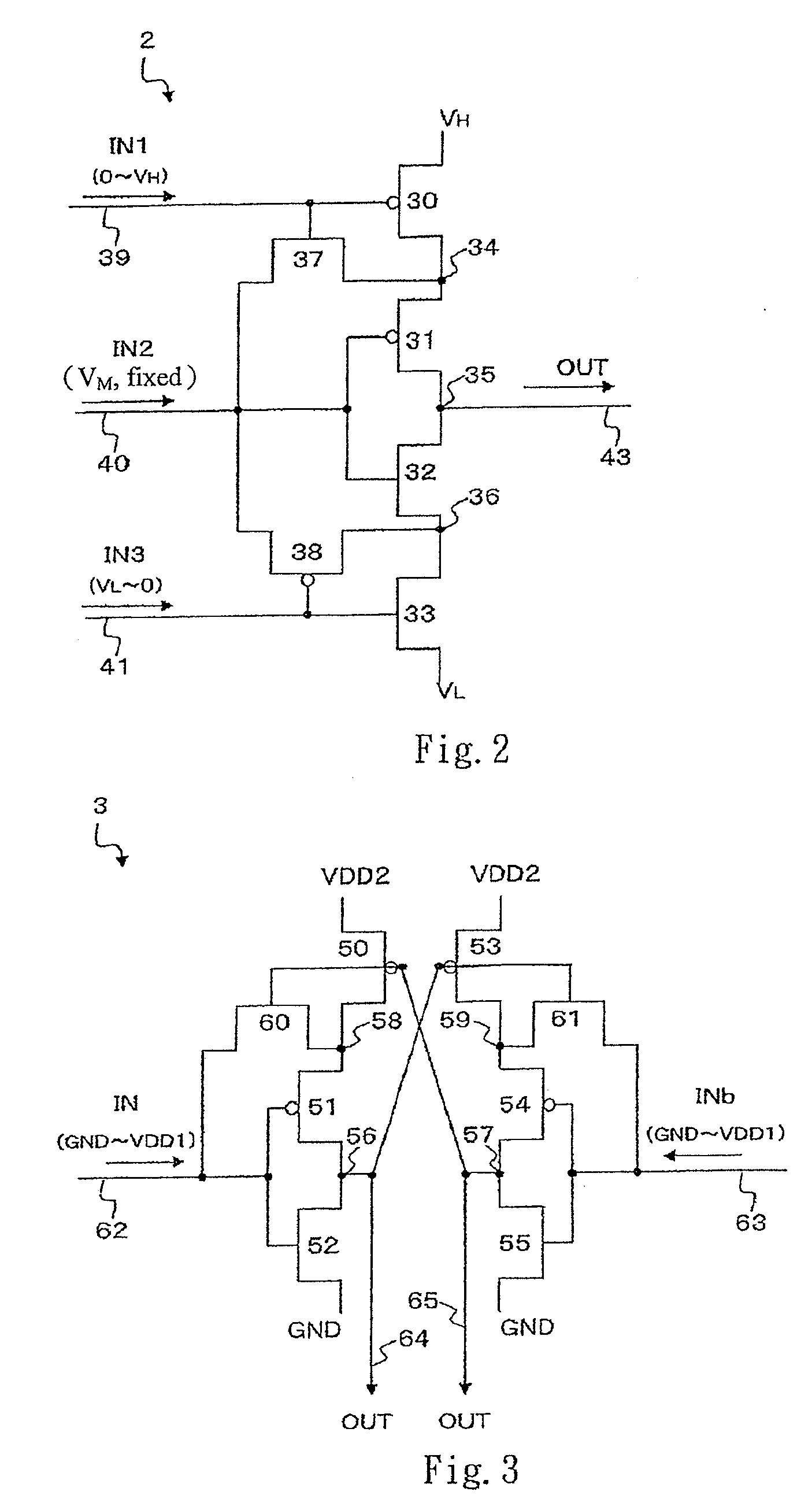Semiconductor integrated circuit
- Summary
- Abstract
- Description
- Claims
- Application Information
AI Technical Summary
Benefits of technology
Problems solved by technology
Method used
Image
Examples
first embodiment
[0044]FIG. 1 is a schematic circuit diagram according to a semiconductor integrated circuit. The circuit as shown in FIG. 1 is an inverter circuit 1 using double gate TFTs (Thin Film Transistors). The inverter circuit 1 includes a series connection of a P-MOS transistor 10, a P-MOS transistor 11, an N-MOS transistor 12 and an N-MOS transistor 13. The P-MOS transistor 10 is connected to a high potential source VH and the N-MOS transistor 13 is connected to a low potential source VL. The gate of each MOS transistor 10˜13 is connected to an input signal line 19. An output signal line 20 is connected to a node of the P-MOS transistor 11 and the N-MOS transistor 12.
[0045]The inverter circuit 1 further includes a P-MOS transistor 17 which connected to a node 14 of the P-MOS transistor 10 and the P-MOS transistor 11 and the input signal line 19, and an N-MOS transistor 18 which connected to a node 16 of the N-MOS transistor 12 and the N-MOS transistor 13 and the input signal line 19. The g...
second embodiment
[0049]FIG. 2 is a schematic circuit diagram according to the semiconductor integrated circuit. The circuit as shown in FIG. 2 is a buffer circuit 2. The buffer circuit 2 includes a series connection of a P-MOS transistor 30, a P-MOS transistor 31, an N-MOS transistor 32 and an N-MOS transistor 33. The P-MOS transistor 30 is connected to a high potential source VH and the N-MOS transistor 33 is connected to a low potential source VL. The gate of the P-MOS transistor 30 is connected to a first input signal line 39, the gates of the P-MOS transistor 31 and the N-MOS transistor 32 are connected to a second input signal line 40, and the gate of the N-MOS transistor 33 is connected to a third input signal line 41. An output signal line 43 is connected to a node 35 of the P-MOS transistor 31 and the N-MOS transistor 32.
[0050]The buffer circuit 2 further includes an N-MOS transistor 37 connected between a node 34 of the P-MOS transistors 30, 31 and the second input signal line 40, and a P-M...
third embodiment
[0055]FIG. 3 is a schematic circuit diagram according to the semiconductor integrated circuit. The circuit as shown in FIG. 3 is a level shifter circuit 3. The level shifter circuit 3 is a circuit for providing a voltage range or amplitude GND˜VDD2 from an input signal in the range of GND˜VDD1. In other words, the level shifter circuit 3 performs an amplitude conversion of the potential at the high potential side while clamping the low potential side.
[0056]The level shifter circuit 3 has a series connection of a P-MOS transistor 50, a P-MOS transistor 51 and an N-MOS transistor 52. The P-MOS transistor 50 is connected to a power supply voltage VDD2, while the N-MOS transistor 52 is returned to ground (GND).
[0057]The level shifter circuit 3 further includes a series connection of a P-MOS transistor 53, a P-MOS transistor 54 and an N-MOS transistor 55. The P-MOS transistor 43 is connected to a power supply voltage VDD2, while the N-MOS transistor 55 is returned to ground.
[0058]The gat...
PUM
 Login to View More
Login to View More Abstract
Description
Claims
Application Information
 Login to View More
Login to View More - R&D
- Intellectual Property
- Life Sciences
- Materials
- Tech Scout
- Unparalleled Data Quality
- Higher Quality Content
- 60% Fewer Hallucinations
Browse by: Latest US Patents, China's latest patents, Technical Efficacy Thesaurus, Application Domain, Technology Topic, Popular Technical Reports.
© 2025 PatSnap. All rights reserved.Legal|Privacy policy|Modern Slavery Act Transparency Statement|Sitemap|About US| Contact US: help@patsnap.com



